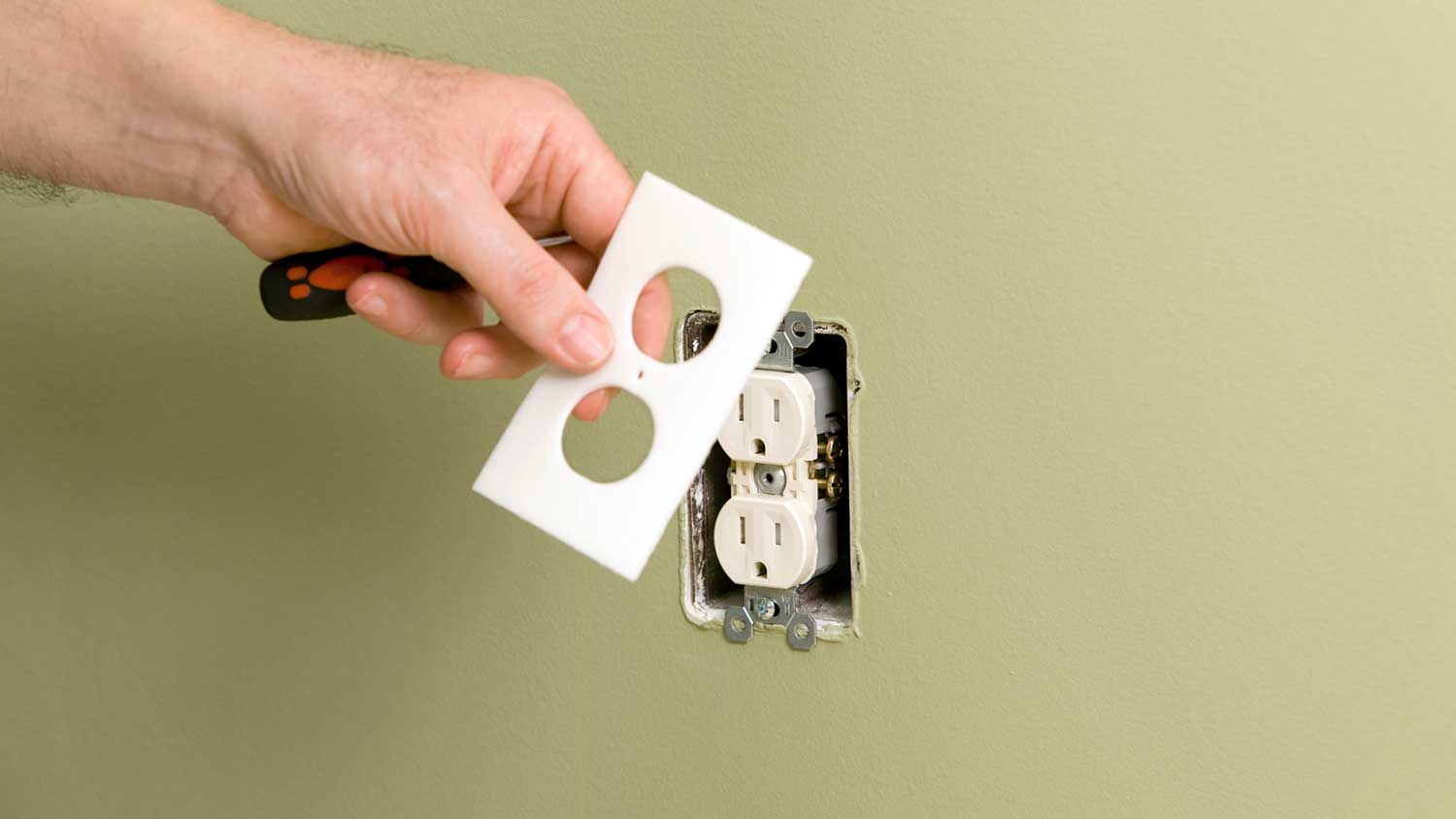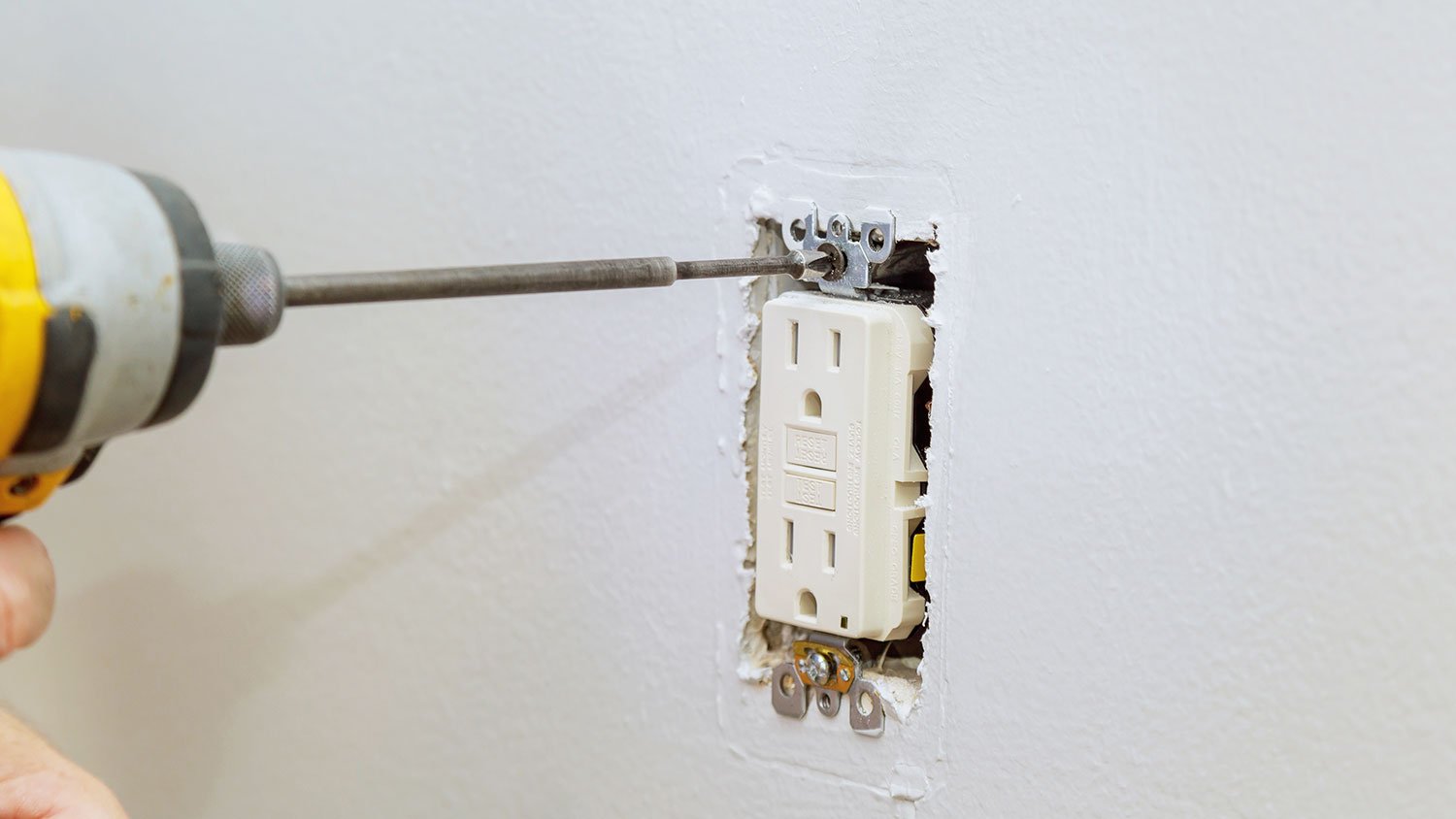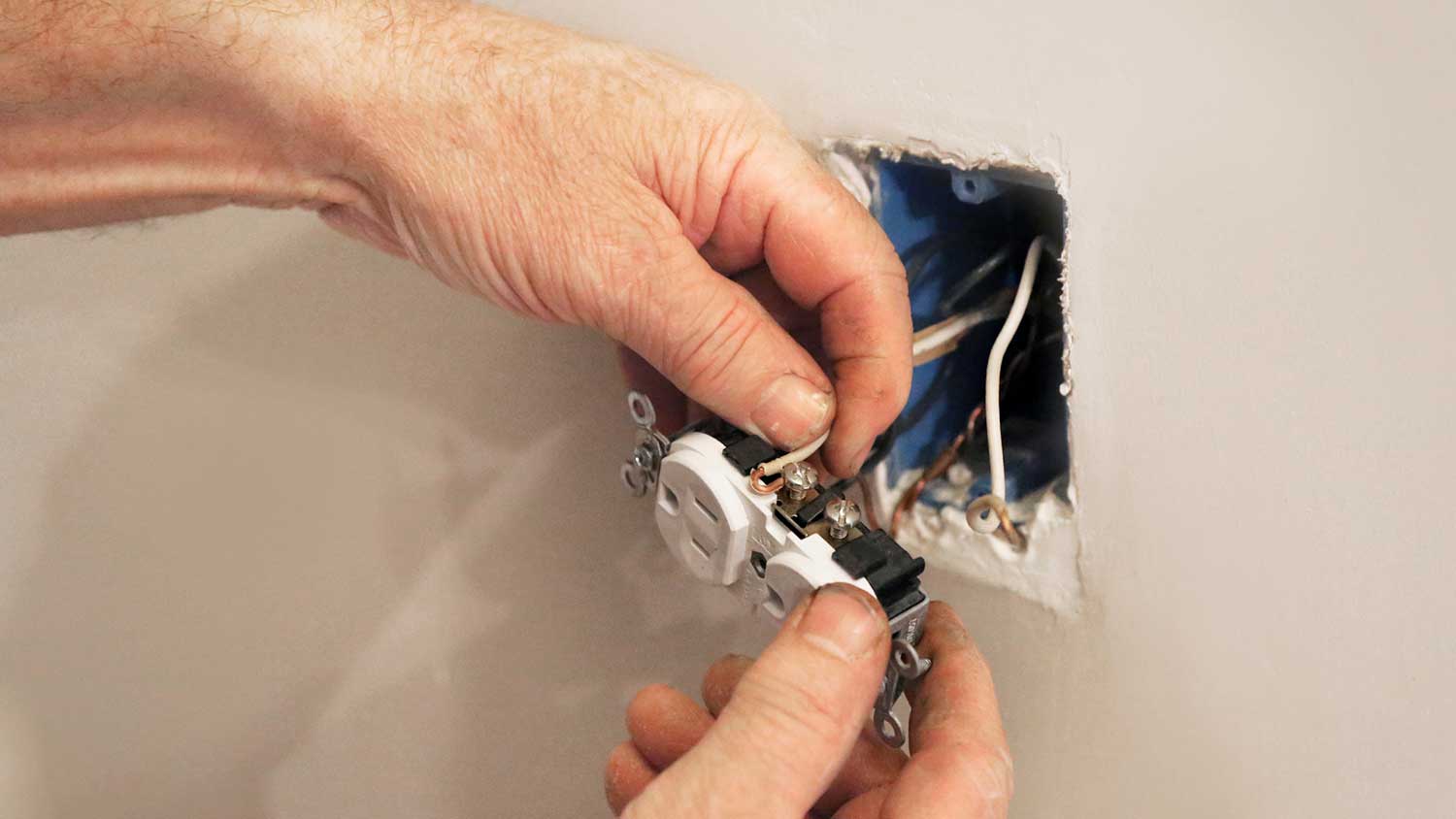
Find out how an EV charger installation can make your electric vehicle ownership experience even better. Learn about costs, benefits, and more.
While it’s possible to DIY wire-releasing from outlets, consider hiring an electrician to ensure your safety


To update or replace your outlets, you'll need to release the wire from the existing outlet. Learning how to release the wire from an outlet is made easier by outlet receptacles that have push-in electrical connections.
However, electrical work can be hazardous to your home and safety, so it’s best to hire a professional electrician to complete this type of project, especially if you don’t have prior experience. If you decide to DIY this project, work slowly, exercise extreme caution, and call in an electrician if you need assistance.
If you’re updating or replacing an electrical outlet that isn’t working, ensure you have a compatible outlet ready to go. Most push-in receptacles are found on 15-amp circuits. They work with a 14-gauge solid or stranded copper wire. If you’re replacing an outlet on a 20-amp circuit, the wire will be a 12-gauge wire and will be too thick to fit into a push-in receptacle.

Before you begin any electrical work, shut off the power to the work area. Go to the circuit breaker box and switch the breaker to "off." If you can’t figure out which breaker connects to the room you're working in, hire an electrician for help. As a last resort, you can shut off the power to the whole house, but it isn’t ideal because it could damage devices and appliances.
Working on an outlet that still has power poses a severe risk of electric shock and injury. Make sure everyone in the house knows you’re working on the electrical system and not to turn on the power while you are working.

After shutting off the appropriate breaker, check to make sure the power to the outlet is off by testing it. Plug in an appliance, and if your hairdryer or toaster still works, the power is not off. To be certain, insert a non-contact voltage tester into each slot of the receptacle to confirm that the power is off. The separate slots within the same receptacle can be individually wired, especially in an older home, so it’s best to double check.

Now, it’s time to get down to the business of releasing the wire. With a small flat head screwdriver, remove the screws holding the outlet cover plate in place. Pull the cover plate away from the wall and set it in a secure place out of reach. Be sure to temporarily store the screws in a safe spot to avoid misplacing them.

During this step, use extreme caution when interacting with the electrical outlet. Remove the screws that hold the electrical outlet to the wall with a flat head screwdriver. Gently pull the electrical outlet about two to three inches away from the wall.
Take a close look at where the wires are connected. Snap a photo to use as a reference when installing the new outlet. Using a voltage tester to confirm that there is no charge by touching each wire.

Now that you’re inside the outlet, look closer at the backside of the outlet, noticing the small rectangular slots underneath each wire. Inside each slot is a locking mechanism that holds the wire in place. You don’t need a special tool to release the wire from the outlet—only a small flathead screwdriver.
Again, this step requires working directly with wires and electrical, so consider hiring an electrician to handle this part of the process. For additional precaution, don protective gloves. Holding the outlet in the palm of one head, place the flat tip of the screwdriver into the slot. Apply decent pressure to the hole. At the same time, pull the wire to release it. Repeat the same process to release the other wires in the outlet. Be patient. You may need to apply more pressure to release the wire. You may also want to call on a partner or neighbor to assist you in holding the outlet while you release the wire.
In some cases, the electrical wires won’t easily release from the outlet, which is a clear sign that you may need assistance from an electrician. If the wires won’t release, another option is to cut the wire, but, again, use extreme caution when working with electrical components. With wire cutters, cut the wire as close to the outlet to salvage as much of the wire as possible. Too short of electrical wires can make it difficult to install a new outlet. That’s why cutting the wires on this type of receptacle should be a last resort, especially if you don’t have prior electrical experience.
Once the wire is cut, strip the insulation with a wire stripper. Follow the manufacturer’s specifications for the length needed for your new outlet.
It’s safest to hire an electrician to handle household electric work, especially when handling wiring. However, you can release a wire from an outlet yourself if you follow safety precautions, including turning off the power at the circuit breaker. You should also test both slots in the outlet with a non-contact voltage tester to ensure there is no charge.
If you have more difficult wiring projects or want to upgrade your electrical system, it’s best to hire a local electrician to take care of the job. Working with electrical systems can be dangerous if you don’t have the right tools and training. The cost to hire an electrician ranges from $160 to $535, depending on the project size and type.
From average costs to expert advice, get all the answers you need to get your job done.

Find out how an EV charger installation can make your electric vehicle ownership experience even better. Learn about costs, benefits, and more.

Considering replacing your home’s knob and tube wiring with a contemporary electrical system? Find out what costs and considerations may be involved.

Attic fan installation costs vary based on location, fan type, and other factors. Get the cost breakdown for labor, materials, and additional extras so you can work out your budget for this essential home renovation project.

Here’s what you need to know to reset an outlet without a reset button. Follow this guide for resetting an outlet in a snap.

Exposed electrical wires present a serious hazard and it’s crucial to cover them properly. Find out how to cap off electrical wires safely and securely.

Wondering who to call for a fast and easy lamppost installation? Our guide covers who should install a lamppost and the general cost for this project.